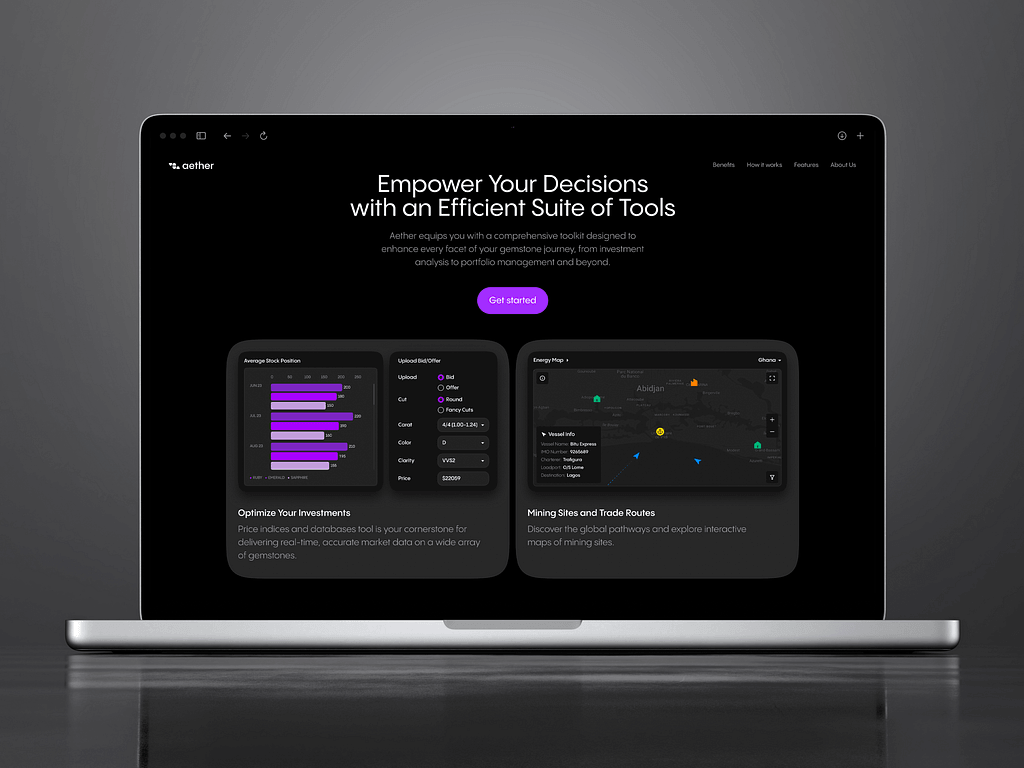Ever launched a software update that disrupted what was working perfectly before? This is a common nightmare in the software development world. But there’s a hero that prevents this chaos. And the name is regression testing.
Contents:
This type of testing serves as a critical safety net, ensuring that new changes, be they enhancements or bug fixes, don’t wreak havoc on existing functionalities. Regression testing is widely applied in web development, app creation, and software updates. This comprehensive guide informs you of the essence, significance, and more about regression testing.
What is Regression Testing?
Imagine you’ve just rearranged the furniture in your home. It looks great, but you need to check if all the electrical outlets are still accessible and if the new layout hasn’t blocked any pathways. That’s how regression testing works in the context of software development.
Regression Testing Definition
Regression testing aims at hunting new bugs in existing functional and non-functional areas of a system after changes have been made. These changes can be anything such as enhancements, patches, or configuration updates.
This method acts as a quality checkpoint, preserving the integrity and performance of the software over its lifespan.
Types of Regression Testing
There are various types of regression testing. Let’s unpack them to understand which strategy might be best suited for your project’s needs:
Corrective Regression Testing
This straightforward approach checks that fixes haven’t interfered with regular operations. It’s particularly efficient for minor updates where the core system functionalities remain unchanged.
Retest-all Regression Testing
Think of this as the deep-clean version of testing. It involves re-running all existing test cases to ensure nothing is missed. This method is thorough but resource-intensive, generally reserved for major updates.
Selective Regression Testing
This strategic approach tests only the system parts likely to be affected by recent changes. It saves time by focusing only on the areas most at risk.
Progressive Regression Testing
Progressive regression testing is used when updates modify the system specifications. This requires developers to create new test cases that will run alongside the existing ones, ensuring that both new features and any impacted existing features are adequately tested.
Complete Regression Testing
Necessary when updates impact multiple components of the software. Usually, a comprehensive evaluation is required to ensure overall system functionality before a major release.

Security Control Panel Design Concept by Conceptzilla
Why is Regression Testing Crucial in Agile and CI/CD Environments?
Maintains Stability
Agile and CI/CD are all about making frequent updates and changes. While this keeps things moving fast, it can also shake up the stability of your software. Regression test steps in to make sure these updates don’t throw everything off balance, keeping the software reliable no matter how fast you’re moving.
Facilitates Rapid Releases
One of the biggest perks of regression testing? It lets you push out updates quickly without cutting corners on quality. It builds confidence, ensuring that every new release upholds high standards.
Enhances Quality
With every new update, there’s a risk of introducing bugs. Regression test catches these issues early on so they can be fixed before they ever reach the users.
Encourages Continuous Feedback
In the fast-paced cycle of Agile and CI/CD, feedback is gold. Regression test continuously gives feedback, which is really important for making step-by-step improvements.
How to Perform Effective Regression Testing?
To make sure your regression testing hits the mark and doesn’t lead to a poor user experience, you’ll need a clear, methodical approach. Here’s how you can integrate this crucial testing into your development process effectively:
- Define Objectives: Clearly identify what you aim to achieve with your regression tests.
- Gather Changes: Compile all changes made to the software, including updates and bug fixes.
- Update Test Cases: Adjust existing or develop new test cases to reflect the changes.
- Set Up Environment: Configure the test environment to mimic production settings accurately.
- Prepare Tools and Data: Ensure all necessary tools and data are ready for testing.
- Execute Tests: Run tests prioritizing critical areas, using automation to enhance efficiency.
- Monitor Results: Keep track of test outcomes and note any failures or anomalies.
- Analyze and Document: Thoroughly analyze results to pinpoint issues and document findings.
- Resolve Issues: Collaborate with developers to fix identified bugs and retest to confirm fixes.
- Evaluate and Report: Assess test coverage and effectiveness, and compile a comprehensive report.
When to Perform Regression Testing?
Deciding when to conduct regression testing is as crucial as knowing how to do it. Here are pivotal moments when regression testing should be at the top of your priority:
- After implementing bug fixes
- Following new feature additions
- Before major releases
- During continuous integration
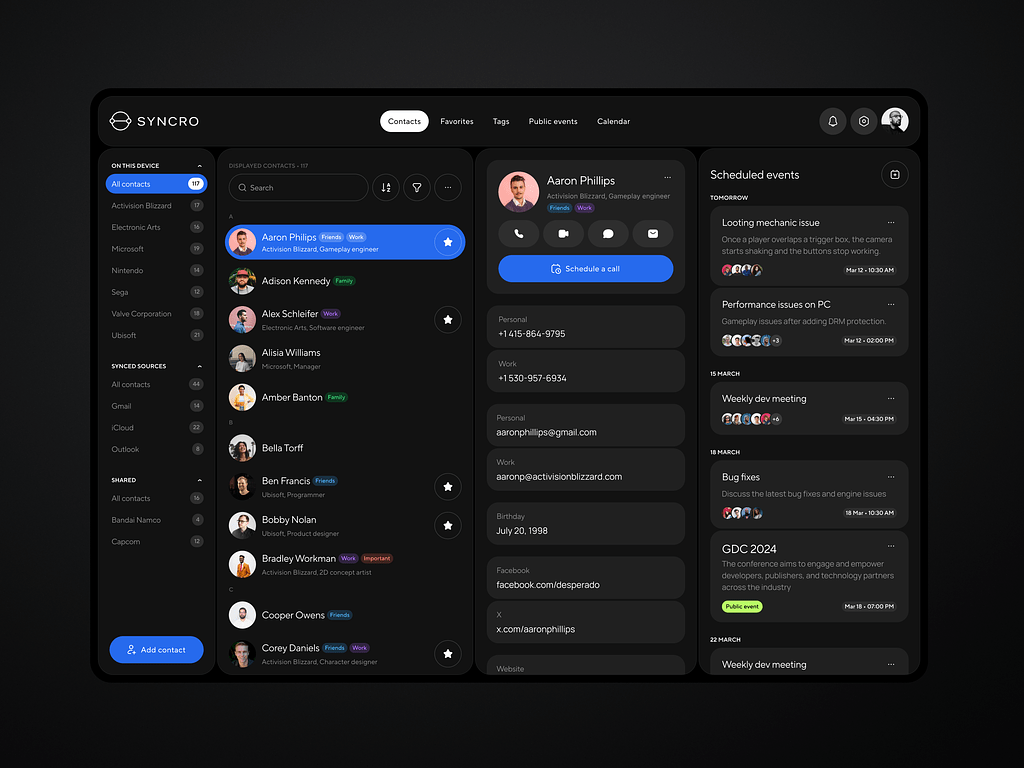
Contact Manager App Design Concept by Conceptzilla
What Tools are Used for Regression Testing?
When it comes to choosing the right tools for regression testing, it’s not just about ticking boxes on a feature list. It is about finding tools that fit seamlessly into your development workflow, enhance your team’s productivity, and ensure your applications run smoothly under any circumstances. The top tools listed here are chosen based on their robustness, ease of integration, user interface, and ability to handle diverse testing scenarios across different platforms.
Here’s a detailed look at some industry favorites:
Selenium
Selenium stands as a powerhouse in automated web testing. It’s incredibly versatile as it supports all major browsers and integrates with various programming languages and testing frameworks. Selenium is particularly valued for its ability to automate browsers in a way that mimics real user actions. This ensures that web applications function seamlessly across different environments. Its robust community support and extensive libraries make it an indispensable tool for developers looking to automate their web testing efficiently. It is the go-to automation tool for web testing, utilized by over 80% of all testers who use browser automation.
Katalon Studio
Katalon Studio is a comprehensive testing solution designed to address a wide range of automation testing needs. It supports web, API, mobile, and desktop application testing. And does it all from one intuitive interface. If you need to integrate with other CI/CD tools like JIRA or Jenkins, Katalon makes that a breeze. It fits into your existing development pipeline perfectly. It’s a real game-changer for teams looking to streamline their testing process without sacrificing depth or breadth in testing.
Apache JMeter
Now, if you’re dealing with performance testing alongside your functional checks, Apache JMeter might just be your go-to.Apache JMeter is primarily known for its performance and load-testing capabilities. But it is also effective for functional regression testing, especially for web applications. JMeter’s ability to simulate heavy loads and provide detailed analytical feedback ensures that your applications can withstand real-world pressures. This dual functionality makes it a versatile tool in both performance benchmarking and ensuring that functional aspects of the application perform under stress.
IBM Rational Functional Tester (RFT)
For those in complex application environments, especially within enterprise settings, RFT is like your reliable comrade.
It excels in testing applications built on robust platforms like .NET and Java. Its integration with IBM’s suite of development tools makes it a prime candidate for organizations invested in a holistic IBM ecosystem. RFT stands out for its automated functional, regression, and data-driven testing capabilities. It integrates well with IBM Rational Quality Manager and other test management tools. It provides an integrated approach to managing the quality of sophisticated software systems.
UFT One
UFT One is a popular choice among testers for its extensive capabilities in automating UI testing across web, mobile, and desktop applications. Renowned for its robust feature set, UFT One supports a wide variety of technologies. It offers advanced functionalities like image-based object recognition and embedded AI capabilities to enhance test accuracy and efficiency. This tool is particularly favored for its intuitive design that simplifies complex automated tasks and integrates seamlessly with other testing and CI/CD tools. This makes it a strong contender for teams needing all-round testing solutions. These tools are more than just software. They’re the pillars that support ambitious testing strategies, ensuring that your applications not only meet but exceed the quality expectations of your users.
Difference Between Regression Testing & Retesting
It’s easy to get the terms regression testing and retesting mixed up. However, they address different needs within the software testing lifecycle.
Here’s a clear breakdown to dispel the confusion and help you understand the specific roles each plays in maintaining software quality:
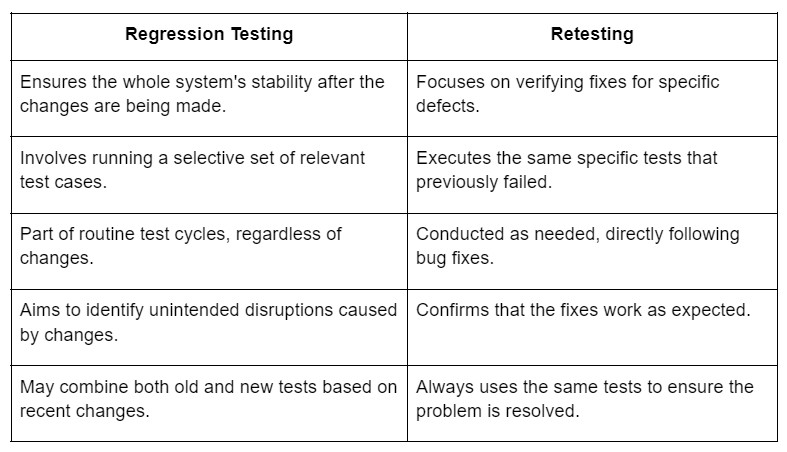
Automated vs Manual Regression Testing
When it comes to regression testing, the debate between automated and manual methods is ongoing. Many believe automated is always better, but each method has its place depending on the project’s needs.
Here’s a comparison to help clarify which method might be right for your testing strategy:
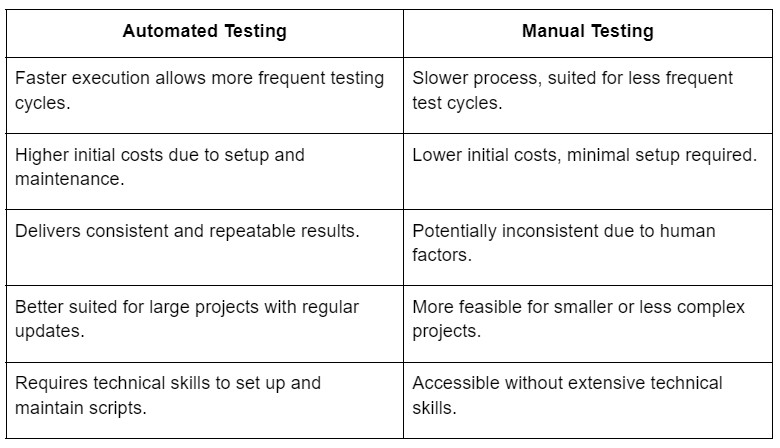
Advantages of Regression Testing
Catches Bugs: Regression testing guards your code, ensuring new updates don’t sneak in bugs or wake up old ones.
Keep the System Solid: It checks new patches or features and makes sure they don’t mess up anything that was working fine before.
Perfect for Agile: Agiles’ fast pace risks bugs from new code changes. This demands frequent iterations for prompt releases. Regression testing makes sure this happens in the most effective way possible.
Wins Trust: It reassures everyone, from stakeholders to users, that new changes are improvements, not headaches.
Happy Users, Happy Life: Regular checks mean fewer problems for users. This keeps you and your team away from frustrations.
Disadvantages of Regression Testing
Can be Time-Consuming: Thorough regression testing might slow down your release cycle.
Resource Hungry: It demands a chunk of your team’s time and energy. And let’s not forget, the tools that sometimes come with a hefty price tag.
Ever-Evolving Test Cases: Keeping test cases fresh and reflective of new changes is a continuous task. It can sometimes feel like chasing a moving target.
Watch out for Redundancy: Without smart management, you might end up running circles around the same tests. This isn’t just boring, but inefficient as well.
Upfront Costs can Sting: Setting up automated regression testing takes upfront investment, both in time and money. But it’s only if you have a short-term vision. Think of it as planting seeds for a more streamlined future.
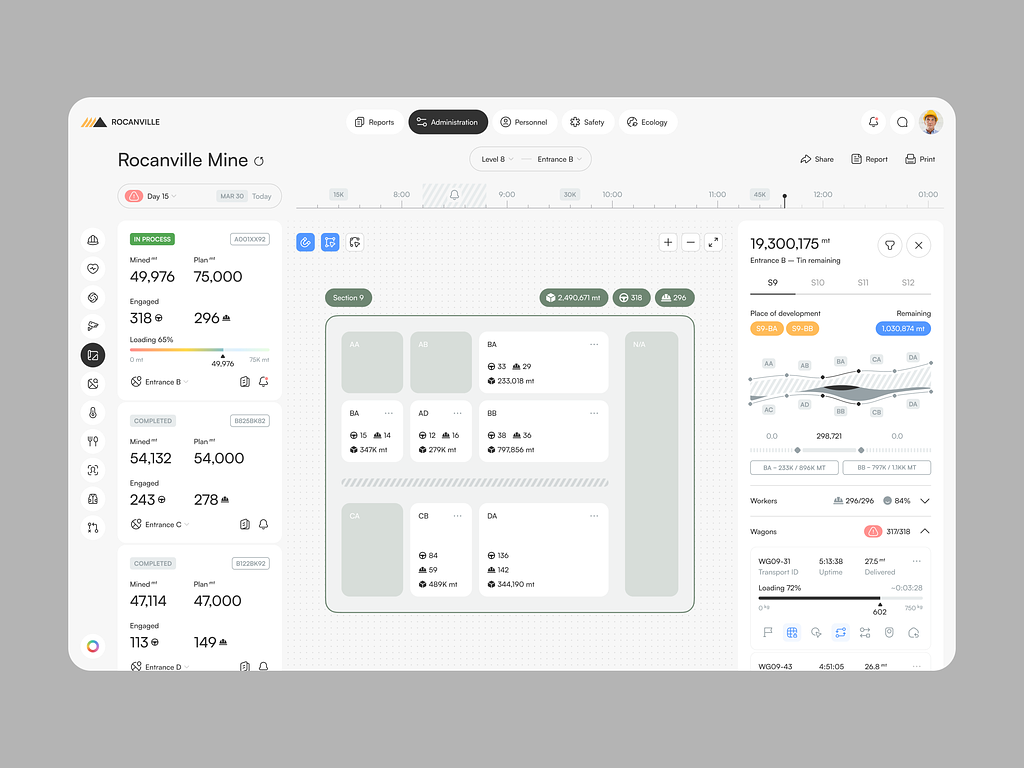
Mining Dashboard Design Concept by Shakuro
Best Practices for Mastering Regression Testing
Here are some best practices that will make your testing pain-free:
- Start by pinpointing exactly what has been changed. This targeted approach helps streamline the testing process.
- Choose tests that specifically address the changed areas. This can include a mix of old tests (for unchanged areas) and new tests designed for new features.
- Not all tests are created equal. Prioritize them based on the criticality of the features they test. Shift your focus on high-impact areas first.
- Automate wherever possible. Automated regression testing can be quite effective in repetitive scenarios. This facilitates more frequent testing by reducing efforts.
- Run the tests, monitor the results, and ensure everything operates as it should. This step is crucial for catching new issues as early as possible.
- Analyze results for failures and anomalies. Understanding these outcomes helps refine the testing process and software quality continuously.
- Keep a clear record of what was tested. Note what failed and what succeeded. Documentation is key to understanding long-term trends and software health.
- Software is never static. Continuously update your testing strategies to adapt to new changes and requirements. You don’t want your test to go irrelevant.
The Future of Regression Testing
As technology evolves, so does the field of regression testing. Now that AI and machine learning have already come, you’re likely to see it being integrated with regression testing tools. This can provide smarter, faster, and more accurate testing methodologies that could predict potential problem areas before they manifest. This could make regression testing in software testing an even more essential part of the software development lifecycle.
Conclusion
This guide has explained regression testing meaning, showing why it’s important, the different types, and how to do it right. Regression testing helps make sure that updates to your software don’t cause problems.
Managing regression testing along with all the other tasks of web development and running a business can be tough. If it feels overwhelming to do it on your own, consider getting help from the experts. Check out our guide on “How To Outsource Web Development And Web Design” and thank us later.
